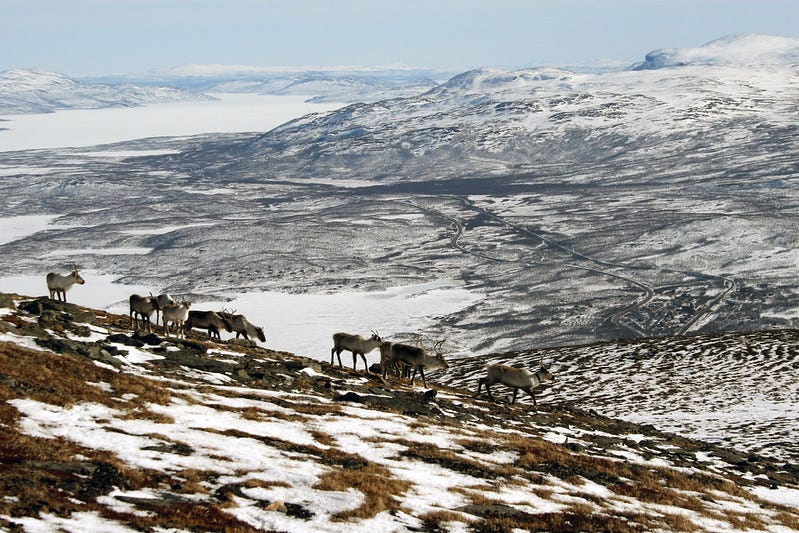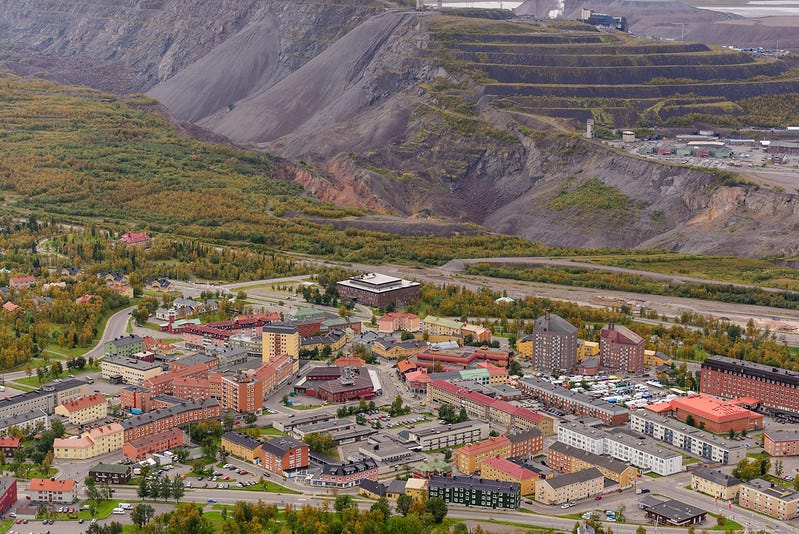EU's critical materials plans worry Nordic Indigenous
The Saami Council, representing the Sámi civil society in Nordic countries, has wrestled with mining for years. The energy transition is changing the rules again, both in Sweden and the EU.
Climate technologies require enormous amounts of metal. I’m Ian Morse, and this is Green Rocks, a newsletter that doesn’t want dirty mining to ruin clean energy.

In 2020, the UN made a rare decision to involve itself in a proposed mining project.
A Swedish company planned to dig a mine in the northern part of the country, where the Sámi people steward lands and herd reindeer. The Sámi are the only people recognized in the European Union as Indigenous. Their ancestral lands spread across Norway, Sweden, Finland and Russia. But over time, centralized development – timber operations, hydropower dams, more mines – had shrunk the lands where they could sustain livelihoods and customs. Nine of 12 operating mines in Northern Sweden are on Sámi lands. Mines typically occupy winter grazing grounds, a stressful bottleneck in millennia-tested herding practices.
“The cumulative effects of all these encroachments is basically that we don't have any more land to feed our reindeer. So the little that is remaining we need to protect,” Elle-Merete Omma told me recently. Without land to feed reindeer, herders spend considerably on artificial fodder. Wind turbines repel herds, and thinned forests lack the lichens that reindeer depend on.
Disappointed in Sweden’s treatment of its Indigenous and fearing the impacts of another large mine, Elle-Merete joined a group of Sámi to petition the UN Committee on the Elimination of Racial Discrimination in 2013. They appealed to international agreements – which Sweden had joined – that protected ethnic groups from state discrimination. In 2020, a definitive answer came: the UN committee recommended Sweden not consider the mining application until after the Sámi had given their consent. Nickel prices were low, and officials withheld its opinion on the mine.
Now, the energy transition is beginning to rekindle the project, called Rönnbäcken. Elle-Merete says its owner, Bluelake Minerals, has hosted town hall meetings and met with local entrepreneurs. In recent interviews, representatives say it’s Europe’s largest cobalt deposit, predicted to produce just 760 tons a year. More than a decade in the making, it aims to dig up each year 30 million tons of ore with nickel and cobalt. Of that, 0.18% is nickel, and an even tinier portion is cobalt.

Companies are bringing a new argument — the expected demand for climate minerals — into Sweden’s complicated relationship with Indigenous lands. According to law, the government relies on the “national interest” to decide how it balances new mines against the impacts of mining. Both Indigenous reindeer herding and the urgency to slash carbon emissions are considered national interests. When two national interests conflict with each other, the law tells officials to choose the option that “best contributes to sustainable development.”
Sweden had responded to the UN’s request to reject the mine, saying its hands were tied in the eyes of the law. The country’s history suggests it may decide that mining for nickel contributes more to sustainable development than preserving the rights of Indigenous people to herd reindeer.
More recently, another mine in Sweden materialized this issue in court. It argued that because it plans to mine gold, it will contribute to the global push to electrify energy. This argument is more difficult to make. Just 8% of gold is funneled into electronic products, and most of those are not necessary in an energy transition. (Some of the best sources of gold are not in rock, but expired electronics. There are valuable slivers of gold in phones and computers, and LED lights contain gold at many times the concentrations its found in the earth.)
So, understandably, an environmental court rejected the argument. The project owner, an Australian and Chinese firm, plans to take the issue to the Supreme Court. Some local officials support it.
Gold has a flimsy link to climate action, and companies have built a stronger link to nickel. In between, perhaps, is iron ore, used mostly for stainless steel. The steel industry alone contributes 10% of global emissions, and it’s used in just about every type of construction, including cars and battery casing. A relatively advanced iron project in northern Sweden has boasted its intentions to create a net-zero mine and feed into plans for a fossil-free stainless steel market. In 2022, however, UN experts again urged Sweden not to permit this mine, citing pollution and the country’s history of favoring business in Sámi regions.
A history of unbalanced power has driven a wedge between the government’s inclination to protect reindeer herding and the ability of Sámi communities to fight for that protection.
“I think it's a sad development. I mean, we're underfunded in the first place, and then we're forced to use the last pennies in our pocket to lawyers,” Elle-Merete says.
The EU’s plans to create a Critical Raw Materials Act is adding further worry to the Saami Council. The draft released earlier this year proposes that by 2030 the EU targets 10% of its demand for strategic minerals from within its borders. To achieve that, it says “strategic projects” would benefit from streamlined permitting and easier financing that should include state financing. In Sweden, Elle-Merete, who runs the EU Unit at the Saami Council, says this risks compounding the government’s preference for business over Indigenous rights.
“They just want to speed up the permitting system. And if you do that, I'm not sure that we have the capacity just to follow along,” Elle-Merete says.
The president of the European Parliament in March said that “all projects linked to the green transition in Europe’s northernmost regions” should include cooperation with Sámi people. However, the EU and the draft CRMA are built on the principle that each country manages its own internal affairs. Sweden’s mining policy, then, is up to Sweden, but financing and permitting may be encouraged by the EU.
Often individual projects will gain licenses because they’ve shown that the impacts of each project are limited. But it’s the cumulative effect of a multitude of projects across the landscape that squeeze traditional lands down to measly slivers. Elle-Merete:
“We've been victims of the climate crisis, and we try to adapt. We try to do as well as we can. And then suddenly, we should also bear the burden of the mitigating measures of the climate crisis globally, by having a mine or several mines in our backyards, resulting in that, okay, we perhaps need to give up our culture our way of life. Because that is what the global community is asking us to do: to be a resource provider to solve the climate crisis.”






I just had a look at your Green Rocks Map - very useful way of illustrating the scale of the problem.
Your writing is so informative in exploring the complexities of the climate crisis. As we ask the Indiginous peoples of our planet to change their ways of life, we should also be looking for ways to change our exploitive way of life, reducing our use of metals that mine the earth and so much more.